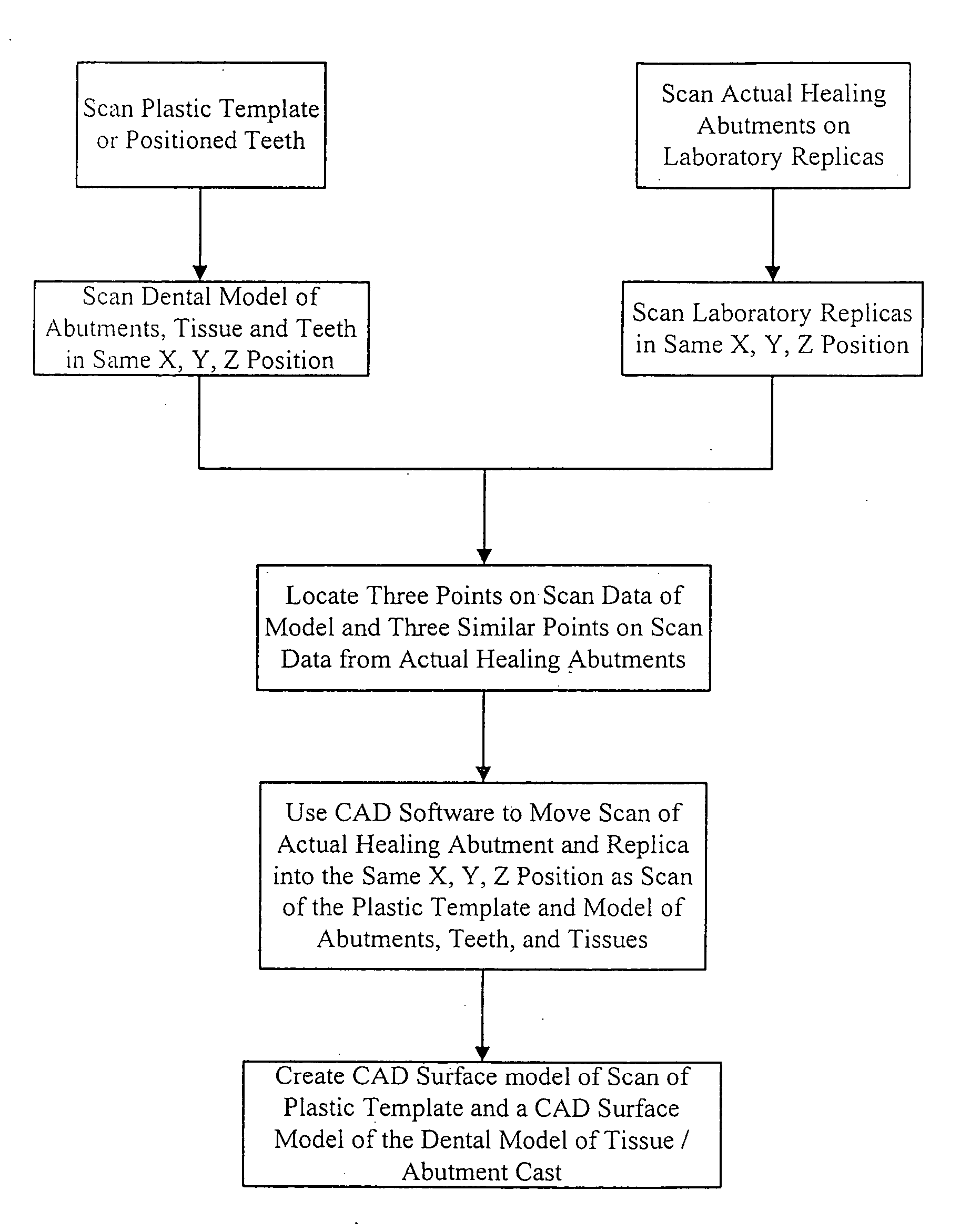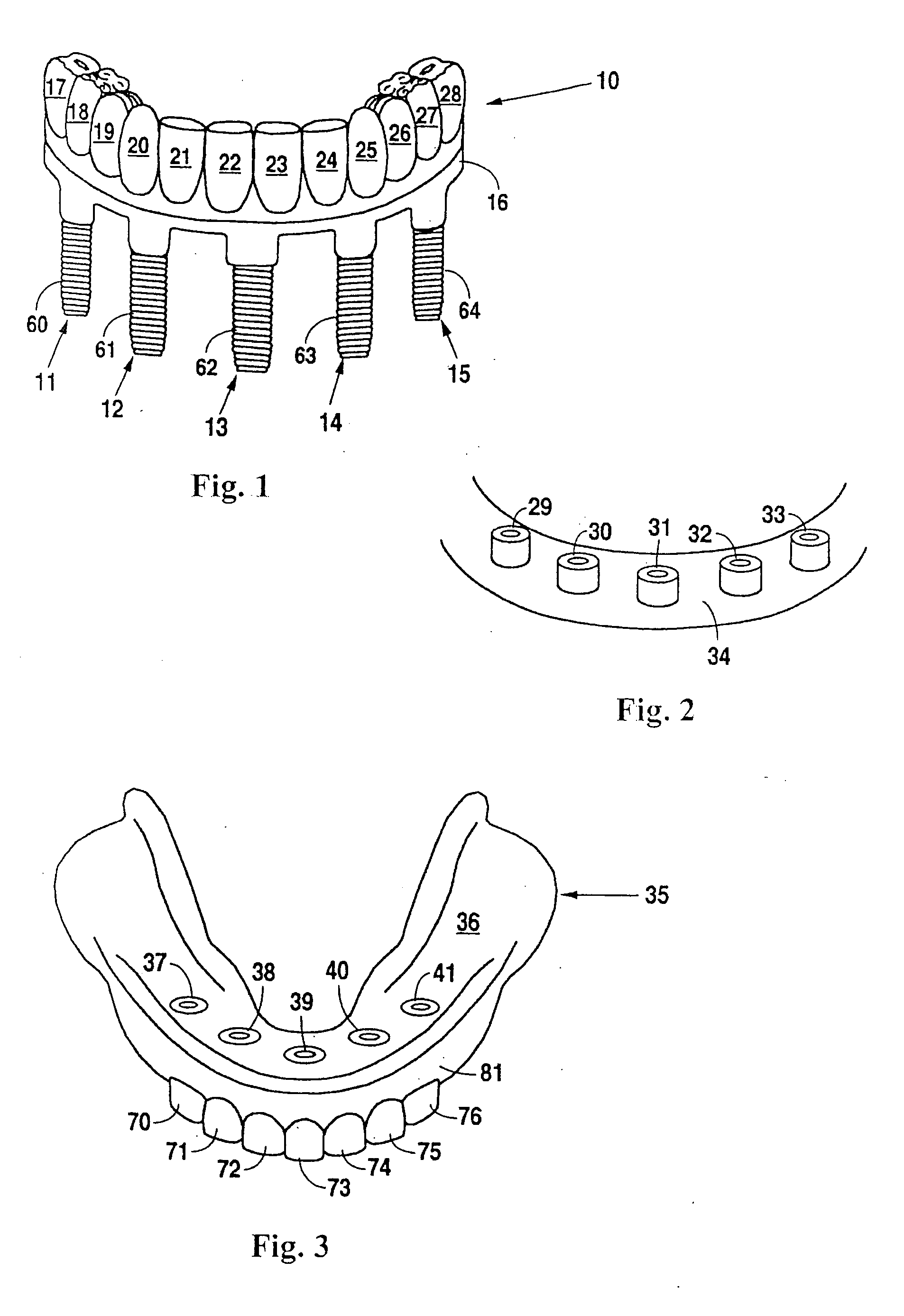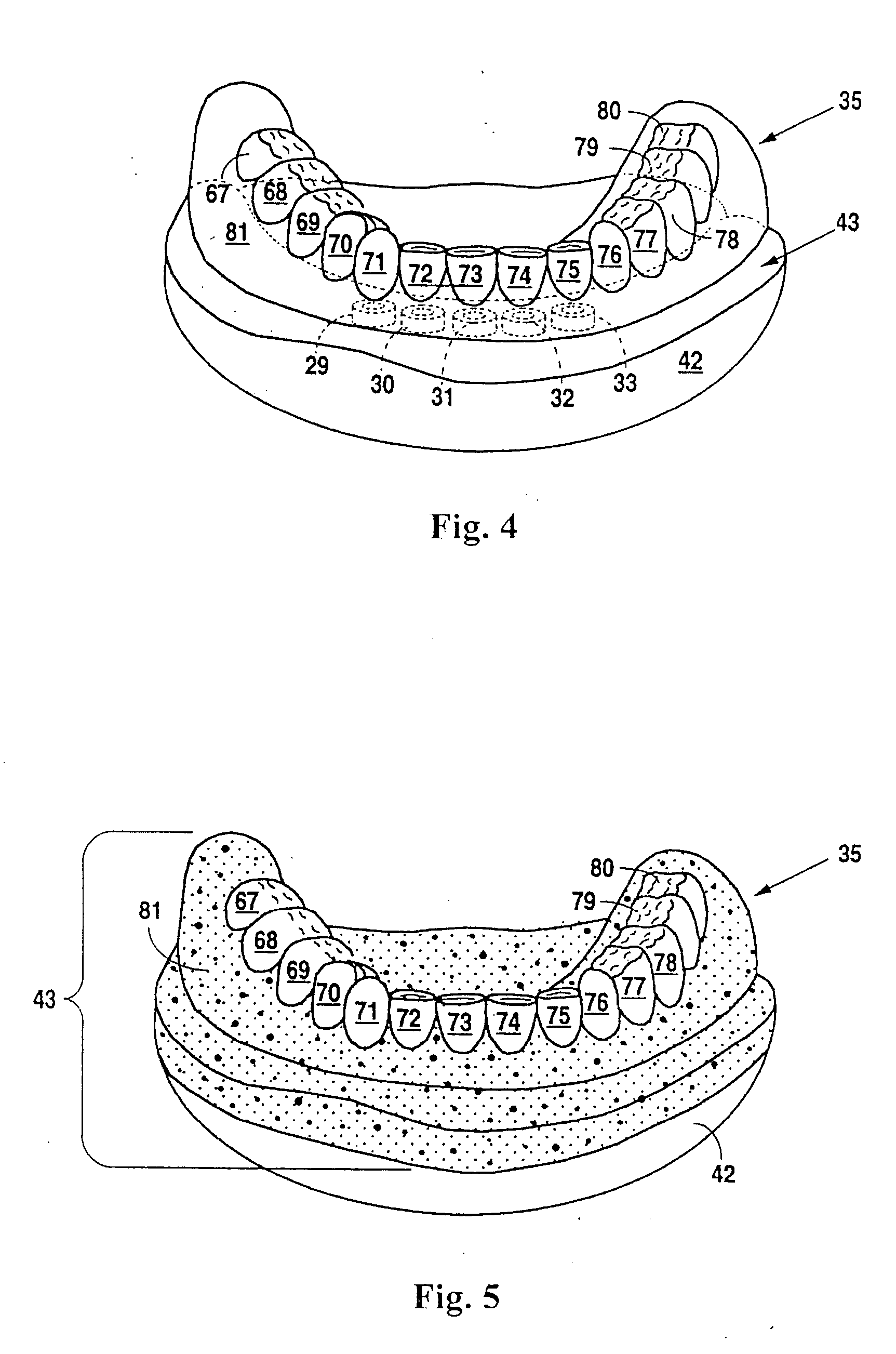Design and manufacture of dental implant restorations
- Summary
- Abstract
- Description
- Claims
- Application Information
AI Technical Summary
Benefits of technology
Problems solved by technology
Method used
Image
Examples
Embodiment Construction
[0043] The present invention relates to a method and system used in dental restoration. A dental restorative system replaces teeth and tissues missing in a patient's mouth. As seen in FIG. 1, dental restorative system 10 comprises dental implant fixtures 11, 12, 13, 14 and 15, dental cast substructure or casting 16, and artificial teeth 17, 18, 19, 20, 21, 22, 23, 24, 25, 26, 27 and 28. Dental implant fixtures 11, 12, 13, 14 and 15 have a first means, metal anchors 60, 61, 62, 63, and 64 (to function as an artificial root), and a second means, abutments or post (not shown) that attaches to an artificial tooth or set of teeth. Metal anchors 60, 61, 62, 63, and 64 can either be metal sleeves inserted into a hole already made in the patient's jawbone or metal screws implanted into the jawbone. After metal anchors 60, 61, 62, 63, and 64 have been implanted, the jawbone is allowed to heal around metal anchors 60, 61, 62, 63, and 64. The abutments or posts of dental implant fixtures 11, 1...
PUM
 Login to View More
Login to View More Abstract
Description
Claims
Application Information
 Login to View More
Login to View More - R&D
- Intellectual Property
- Life Sciences
- Materials
- Tech Scout
- Unparalleled Data Quality
- Higher Quality Content
- 60% Fewer Hallucinations
Browse by: Latest US Patents, China's latest patents, Technical Efficacy Thesaurus, Application Domain, Technology Topic, Popular Technical Reports.
© 2025 PatSnap. All rights reserved.Legal|Privacy policy|Modern Slavery Act Transparency Statement|Sitemap|About US| Contact US: help@patsnap.com



